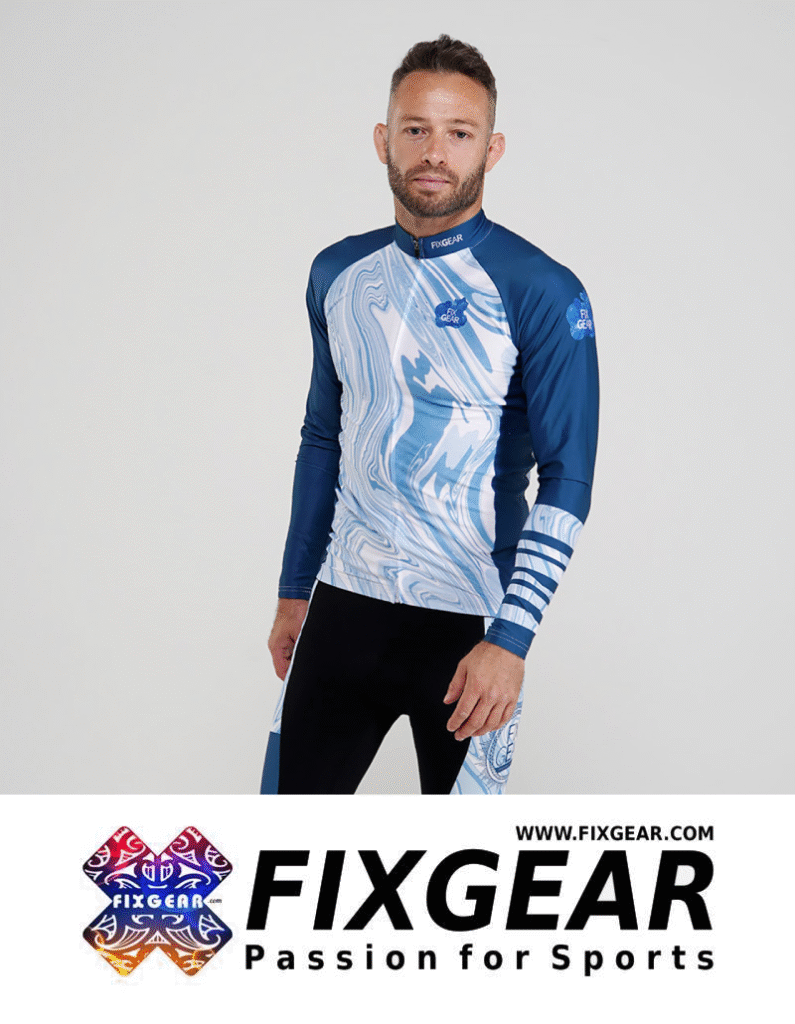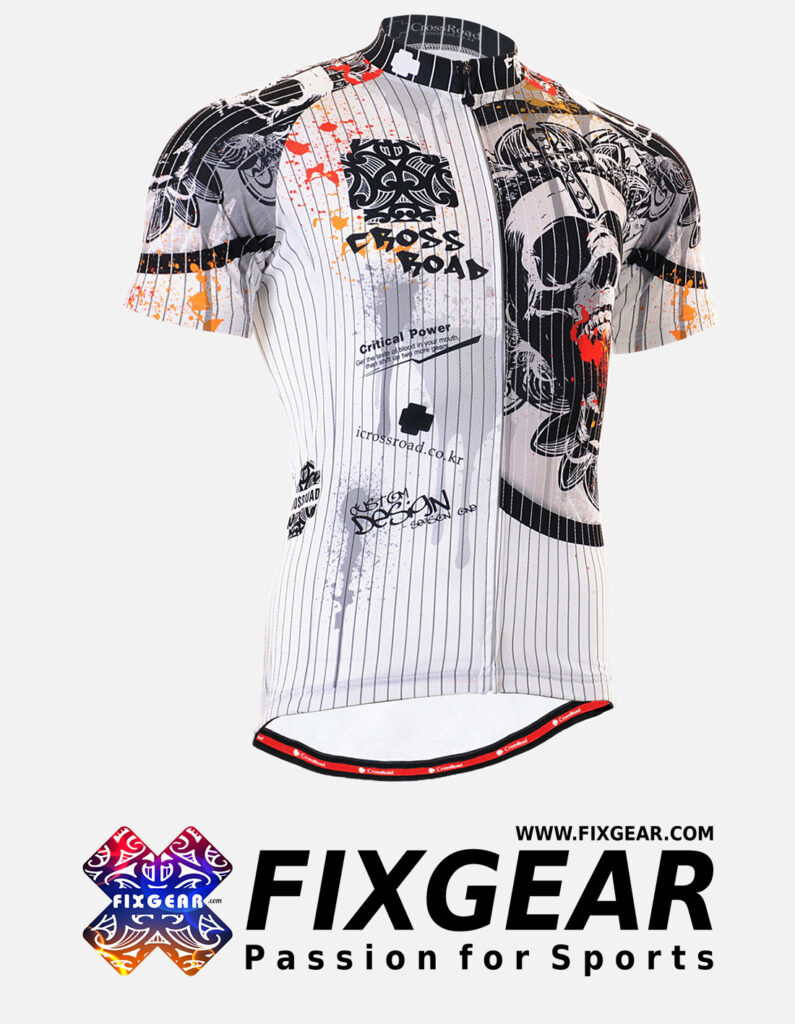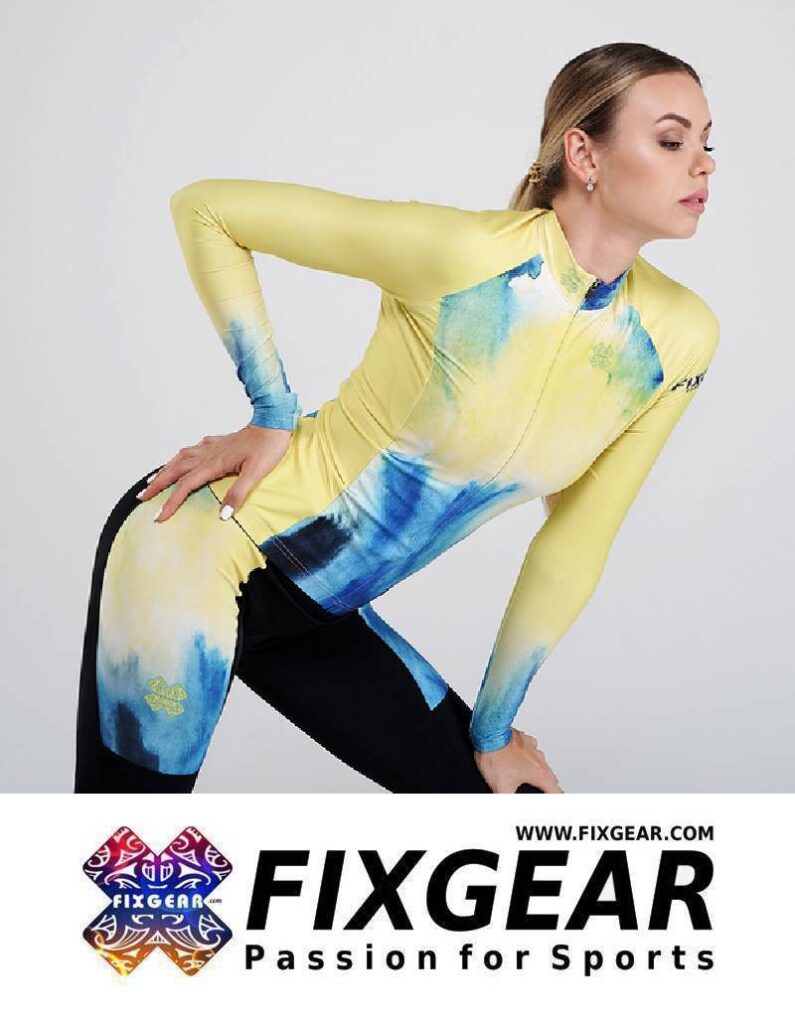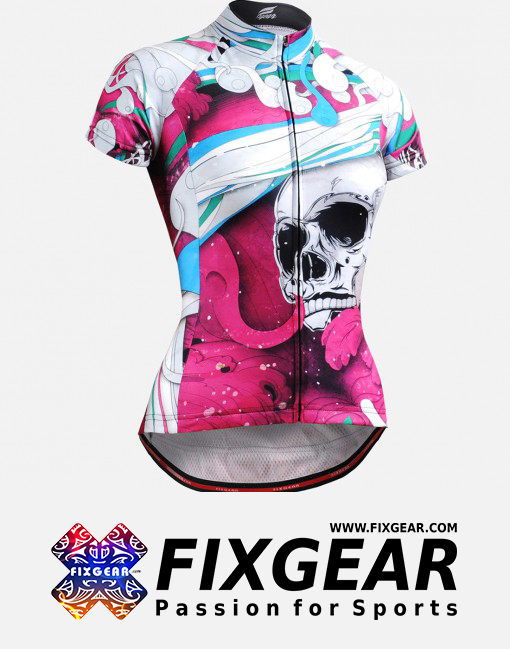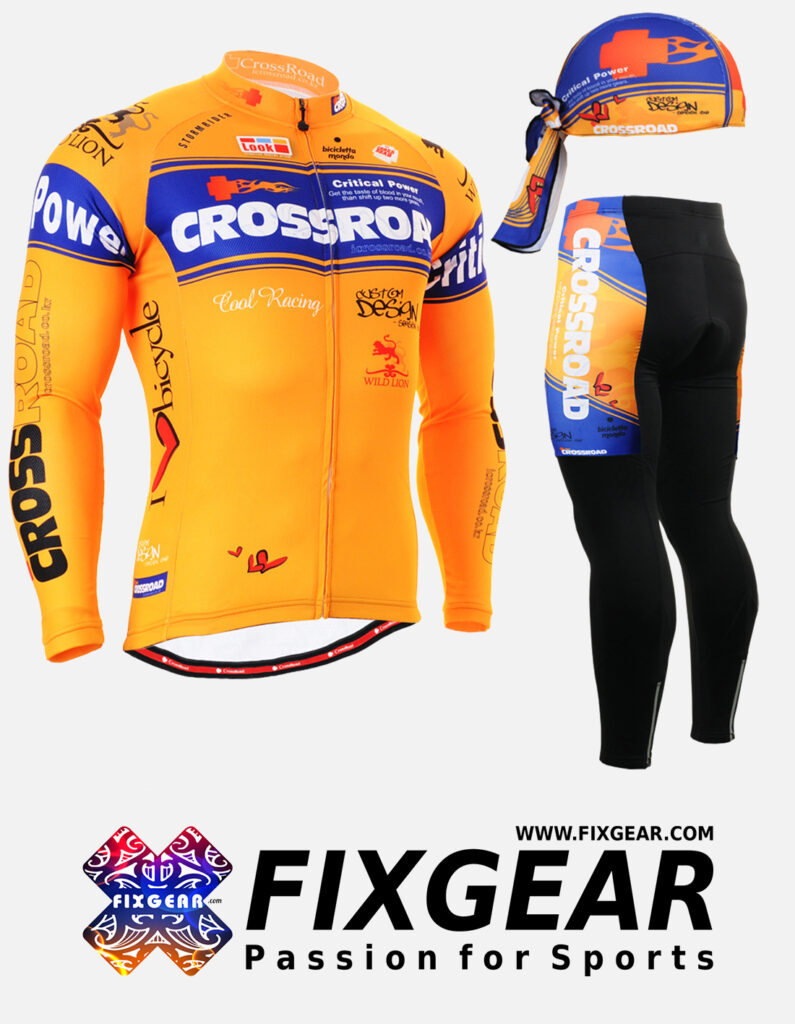When cycling, wearing appropriate clothing for safety and comfort is essential. Here are some items to avoid:
1. Loose clothing: Avoid baggy clothes caught in the bike’s moving parts.
2. Cotton fabric: Steer clear of cotton, which absorbs sweat and can become heavy and uncomfortable. Opt for moisture-wicking materials instead.
3. Flip-flops or sandals: Wear closed-toe shoes for better grip and protection.
4. Heavy or thick clothing can restrict movement and cause overheating. Lightweight and breathable fabrics are best.
5. Bright colours only: While bright colours can be good for visibility, avoid wearing all-black or dark clothing, especially in low-light conditions.
6. Jewelry: Remove any dangling or loose jewelry that could get caught while cycling.
7. Non-cycling gloves: Use specific cycling gloves for better grip and protection instead of regular gloves.
1 – How can I protect my private parts while cycling?
To protect your private parts while cycling, consider the following tips:
1. Wear padded shorts: Invest in high-quality cycling shorts with built-in padding. This padding helps cushion and reduce friction during rides.
2. Choose the right saddle: A good bike saddle can make a significant difference. Look for a saddle designed for your anatomy and riding style, with cutouts or padding to relieve pressure.
3. Adjust your bike fit: Ensure your bike is correctly fitted to your body. A professional bike fitting can help you find the correct position to minimize discomfort.
4. Use chamois cream: Applying chamois cream can reduce friction and chafing, making your ride more comfortable.
5. Wear breathable, moisture-wicking fabrics: Choose cycling attire from materials that wick away moisture to help keep the area dry and comfortable.
6. Take breaks: On longer rides, take breaks to get off the saddle and relieve pressure.
7. Consider bike shorts with a supportive design: Some cycling shorts are specifically designed to provide additional support, which can help protect sensitive areas.
2 – Is it OK to bike in jeans?
Biking in jeans is generally acceptable, but there are some factors to consider:
Pros:
• Style: Jeans can provide a casual, stylish look that many people prefer for short rides or commuting.
• Durability: Denim is a strong fabric that can withstand wear and tear.
Cons:
• Comfort: Jeans can be restrictive and may not allow for a full range of motion, especially during longer rides or more intense cycling.
• Breathability: Denim is not as breathable as specialized cycling fabrics, which can lead to discomfort and overheating.
• Chafing: The seams and fit of jeans may cause chafing during cycling, mainly if they are tight.
Conclusion:
While it’s okay to bike in jeans for short distances or casual rides, consider investing in cycling-specific clothing for longer rides to enhance comfort and performance.
3 – Why shouldn’t you ride a bike at night?
Riding a bike at night can pose several risks and challenges:
1. Reduced visibility: Limited natural light makes it harder for cyclists to see obstacles, potholes, or uneven surfaces. It also makes it difficult for drivers to see cyclists, increasing the risk of accidents.
2. Increased risk of accidents: Statistics show that cycling accidents are more common at night due to poor visibility and reduced awareness from drivers.
3. Limited reaction time: With less light, cyclists have less time to react to sudden hazards or environmental changes.
4. Personal safety concerns: Nighttime cycling can also raise personal safety issues, as it may be easier for potential threats to go unnoticed in low-light conditions.
5. Fatigue: Riding at night can lead to increased fatigue, especially if you’re not used to it, affecting focus and decision-making.
Tips for Night Riding:
If you ride at night, ensure you have proper lights and reflective gear to increase visibility and take extra precautions to stay safe.
4 – Can I wear regular clothes to cycle?
Yes, you can wear regular clothes while cycling, but there are some considerations to keep in mind:
Pros:
• Comfort: If you choose loose-fitting, breathable clothing, you may feel comfortable while riding, especially for short trips.
• Convenience: Wearing regular clothes can be more convenient for commuting or casual rides where you may not want to change.
Cons:
• Restricted movement: Tight or restrictive clothing can limit your range of motion and make pedalling more difficult.
• Chafing and discomfort: Certain fabrics or seams in regular clothing can cause chafing during rides, especially on longer journeys.
• Sweat absorption: Regular clothes, especially cotton, tend to absorb sweat, which can lead to discomfort.
Conclusion:
While wearing regular clothes for casual or short rides, investing in cycling-specific apparel is a good idea for longer distances or more intense cycling, as it can enhance comfort and performance.
5 – What is the dress code for bike riders?
The dress code for bike riders typically includes the following elements to ensure comfort, safety, and performance:
1. Cycling Shorts:
• Padded shorts are recommended to reduce friction and provide comfort during rides.
2. Jerseys:
• Cycling jerseys made from moisture-wicking materials help keep you dry and comfortable. Look for options with pockets for convenience.
3. Footwear:
• Wear closed-toe shoes for protection and better grip. Cycling shoes with cleats can enhance performance, but comfortable athletic shoes are also acceptable for casual rides.
4. Helmet:
• A properly fitted helmet is essential for safety and is often required by law in many areas.
5. Gloves:
• Cycling gloves can provide grip, reduce vibration, and protect your hands in case of a fall.
6. Visibility Gear:
• Bright or reflective clothing and accessories are essential for visibility, especially when riding in low-light conditions.
7. Accessories:
• Sunglasses can protect your eyes from UV rays and debris. A lightweight windbreaker or arm warmers can help change weather conditions.
Conclusion:
While the specific dress code may vary depending on the type of cycling (commuting, racing, mountain biking, etc.), prioritizing comfort, safety, and visibility is essential for all cyclists.
6 – Can I wear leggings for cycling?
Yes, you can wear leggings for cycling, but there are some factors to consider:
Pros:
• Comfort: Leggings can provide a comfortable fit and allow for a full range of motion while pedalling.
• Warmth: They are a good option for cooler weather, as they can help keep your legs warm.
• Style: Leggings come in various styles and colours, allowing you to express your style while cycling.
Cons:
• Chafing: Leggings may cause chafing during longer rides depending on the material and fit. Look for leggings with flat seams and moisture-wicking properties to minimize this risk.
• Padding: Unlike padded cycling shorts, most leggings lack cushioning, leading to discomfort on longer rides. Consider wearing padded shorts underneath if you choose leggings for extended cycling sessions.
• Breathability: Some leggings may not be as breathable as specialized cycling gear, which can lead to overheating during intense rides.
Conclusion:
Leggings can be a suitable option for cycling, especially for short rides or casual outings. Consider layering with padded shorts or opting for cycling-specific apparel to enhance comfort for longer rides.
7 – Do you wear a bra when cycling?
Yes, many people choose to wear a bra while cycling for comfort and support. Here are some considerations:
1. Support:
• A well-fitted sports bra can provide the necessary support during cycling, especially for those with larger busts, helping to reduce discomfort and movement.
2. Comfort:
• Sports bras made from breathable, moisture-wicking fabrics can enhance comfort and prevent chafing during rides.
3. Personal Preference:
• Ultimately, wearing a bra while cycling is a personal choice. Some individuals prefer the added support, while others feel comfortable without one.
4. Alternative Options:
• Consider options like built-in bras in cycling jerseys or sports tops explicitly designed for physical activity, which can provide support without the bulk of a traditional bra.
Conclusion:
Wearing a bra while cycling can enhance comfort and support, but it ultimately depends on individual preference and body type.
8 – What are the dos and don’ts of cycling?
Here are some important do’s and don’ts of cycling to ensure your safety and enjoyment:
Do’s:
1. Wear a helmet: Always wear a properly fitted helmet to protect your head in case of an accident.
2. Signal your intentions: Use hand signals to indicate turns or stops, making your movements clear to drivers and other cyclists.
3. Follow traffic rules: Obey traffic signals and signs like any other vehicle on the road.
4. Be aware of your surroundings: Watch for pedestrians, vehicles, and road hazards.
5. Maintain your bike: Regularly check your bike’s brakes, tires, and gears to ensure it’s in safe working condition.
6. Use lights and reflectors: Equip your bike with front and rear lights and reflectors, especially when riding at night or in low-light conditions.
7. Stay hydrated: Bring water with you on longer rides to stay hydrated.
8. Dress appropriately: Wear comfortable, breathable clothing suitable for cycling, and consider visibility gear.
Don’ts:
1. Don’t use headphones: Avoid wearing headphones while cycling, as they can distract you from your surroundings and reduce traffic awareness.
2. Don’t ride against traffic: Always ride in the same direction as traffic to improve visibility and safety.
3. Don’t weave between parked cars: This can be dangerous, as car doors may open unexpectedly.
4. Don’t ignore weather conditions: Be cautious in adverse weather conditions, such as heavy rain or snow, affecting visibility and road traction.
5. Don’t ride too close to the edge of the road: Maintain a safe distance from the curb to avoid hazards and allow for safe maneuvers.
6. Don’t engage in aggressive riding: Avoid aggressive or reckless behaviour, such as speeding or taking unnecessary risks, especially in traffic.
7. Don’t forget to communicate: If you’re riding with others, communicate your intentions and maintain a safe distance from one another.
Conclusion:
Following these dos and don’ts can help ensure a safer and more enjoyable cycling experience.
9 – What is appropriate clothing for cycling?
Appropriate clothing for cycling focuses on comfort, performance, and safety. Here’s a breakdown of recommended attire:
1. Cycling Shorts:
• Padded shorts: These provide cushioning and reduce friction during rides. They come in various styles, including bibs and traditional shorts.
2. Cycling Jerseys:
• Moisture-wicking materials: Jerseys made from breathable, lightweight fabrics help keep you dry by wicking away sweat. Look for options with pockets for storing essentials.
3. Footwear:
• Cycling shoes: Consider shoes designed for cycling, particularly those with cleats for improved pedalling efficiency. Comfortable athletic shoes are also suitable for casual rides.
4. Gloves:
• Cycling gloves provide grip, protect your hands from vibrations, and help prevent chafing on long rides. Look for padded options for extra comfort.
5. Helmet:
• Safety first: A properly fitted helmet is often legally required for cycling protection.
6. Visibility Gear:
• Bright or reflective clothing: Wearing bright colours and reflective materials increases your visibility to motorists, especially in low-light conditions.
7. Outer Layers:
• Windbreaker or jacket: A lightweight windbreaker or cycling jacket can help keep you warm and dry for cooler weather.
• Arm and leg warmers: These can be added or removed as conditions change, providing flexibility in varying temperatures.
8. Socks:
• Breathable, moisture-wicking socks: Choose cycling-specific socks that keep your feet dry and comfortable.
9. Accessories:
• Sunglasses: Protect your eyes from UV rays and debris while riding.
• Bandana or neck gaiter: Useful for keeping sweat at bay or providing warmth in colder conditions.
Conclusion:
Investing in appropriate cycling clothing can enhance your overall experience, providing comfort, support, and safety.
10 – How can I protect my skin while cycling?
To protect your skin while cycling, consider the following tips:
1. Use Sunscreen:
• Broad-spectrum SPF: Apply a broad-spectrum sunscreen with at least SPF 30 on all exposed skin, even cloudy days. Reapply every two hours, especially if you’re sweating.
2. Wear Protective Clothing:
• Long sleeves and pants: Opt for lightweight, breathable long-sleeve jerseys and pants to cover your skin while cycling. Look for UPF-rated fabrics for added sun protection.
3. Use Lip Balm:
• SPF lip balm: Protect your lips with a lip balm that contains SPF to prevent sunburn and chapping.
4. Stay Hydrated:
• Drink plenty of water: Keeping your body hydrated helps maintain skin moisture and prevent dryness and irritation.
5. Wear Sunglasses:
• UV protection: Sunglasses shield your eyes and the delicate skin around them from harmful UV rays, reducing the risk of sun damage.
6. Choose the Right Gear:
• Moisture-wicking fabrics: Wear clothing made from moisture-wicking materials to help prevent chafing and irritation caused by sweat.
7. Clean Your Skin:
• Post-ride care: After cycling, wash your skin with a gentle cleanser to remove sweat, sunscreen, and dirt. Follow up with a moisturizer to keep your skin hydrated.
8. Avoid Direct Sun Exposure:
• Ride in the early morning or late afternoon: If possible, cycle when the sun’s rays are less intense to minimize sun exposure.
Conclusion:
Taking these precautions can effectively protect your skin while enjoying your cycling adventures.
11 – Do you wear socks when cycling?
Yes, wearing socks while cycling is generally recommended for several reasons:
1. Comfort:
• Cushioning: Socks provide extra cushioning for your feet, enhancing comfort during long rides.
• Fit: They help create a better fit between your foot and the shoe, reducing the likelihood of blisters and hot spots.
2. Moisture management:
• Wicking properties: Many cycling-specific socks are made from moisture-wicking materials that help keep your feet dry by pulling sweat away from the skin.
3. Protection:
• Preventing chafing: Socks can help prevent chafing and irritation from direct contact between your foot and the shoe.
• Warmth: Socks can help keep your feet warm in cooler conditions.
4. Style:
• Personal expression: Cycling socks come in various styles and colours, allowing you to express your style while riding.
Conclusion:
Wearing socks while cycling is beneficial for comfort, moisture management, and protection, making it a good practice for cyclists of all levels.
12 – Do cyclists wear spandex?
Yes, many cyclists wear spandex as part of their cycling attire, and there are several reasons for this:
1. Comfort:
• Stretch and flexibility: Spandex is known for its elasticity, allowing for a full range of motion while pedalling. This flexibility enhances comfort during rides.
2. Moisture management:
• Breathability: Spandex blends are often designed to wick moisture away from the body, helping to keep cyclists dry and comfortable.
3. Aerodynamics:
• Streamlined fit: The tight spandex fit minimizes wind resistance, which can be particularly beneficial for road cyclists looking to improve speed and efficiency.
4. Chafing prevention:
• Seamless designs: Many spandex cycling shorts and jerseys are designed with flat or minimal seams, reducing the risk of chafing during long rides.
5. Support:
• Padded options: Spandex cycling shorts often have built-in padding (chamois) for added comfort and support on longer rides.
Conclusion:
Spandex is popular among cyclists for its comfort, moisture-wicking properties, and aerodynamic benefits, making it a standard fabric in cycling apparel.


